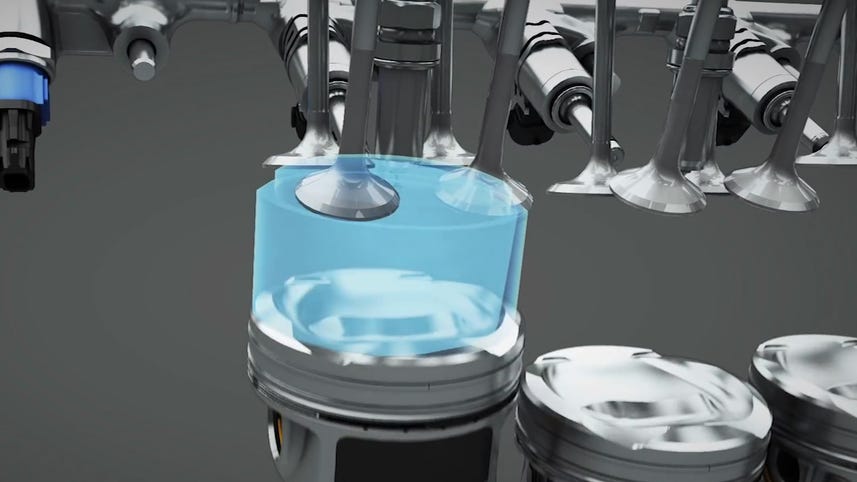
[MUSIC]
A lot of cars actually use Atkinson Cycle engines, you just wouldn't know it.
I guess lean burn doesn't make for as sexy a badge as turbo or 5.0.
[MUSIC]
And notice most cars within Atkinson are hybrids, as the technology's dove tail, with emission of efficiency above sheer power.
Here's how it all works.
An Atkinson engine basically, one, takes in a little in a little less Fuel and two, rings the most out of it.
But three, at a sacrifice of raw horsepower.
When a given piston in an Atkinson engine has completed an intake stroke and begins to compress the charge of air and fuel, it leaves the intake valve open for a bit, creating a sort of leak and thereby reducing the amount of air fuel charge in the cylinder.
Unchanged is the duration of the combustion, or power stroke.
Thereby giving the engine all of the time it needs to fully burn the smaller charge it ignited.
The downside is, less air and fuel going in means less power coming out when you ignite it all, but you spend proportionally less fuel on your overall power.
Since most Atkinson cars are hybrid, so what the engine lacks in oomph, the electric motor more than makes up.
[MUSIC]
Now, why is it called an Atkinson cycle?
That's because it was a invented by a guy named Atkinson in the late 1800's, a British engineer.
Back then there was no variable valve timing as we've discussed.
So he literally had to vary the travel length of each piston's cycle with a combination of wonky linkages you should be pretty glad we're not dealing with today Today.
More car tech demystified right now at CNETOnCars.com.
Click on Car Tech 101.
[BLANK_AUDIO]